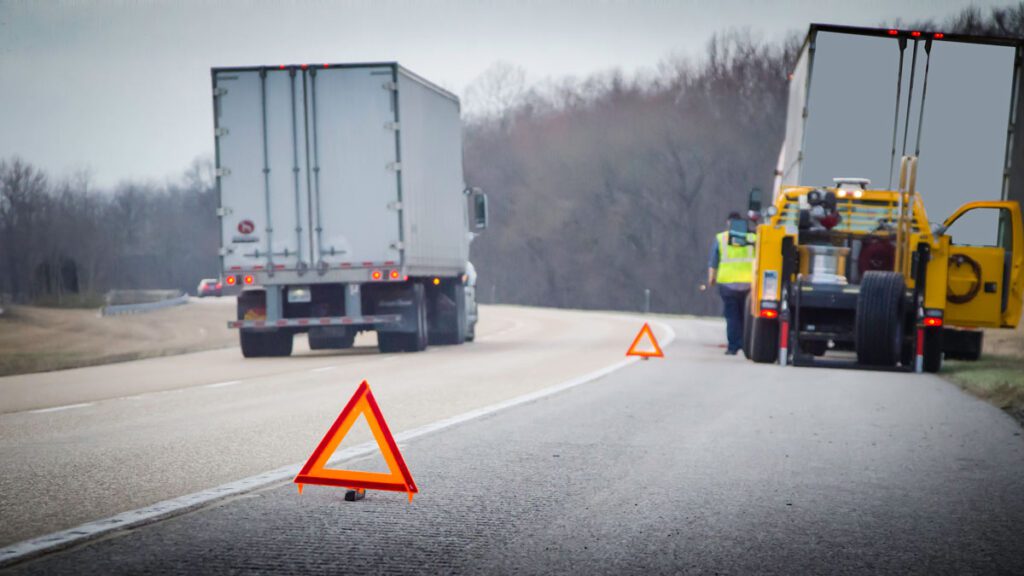June 16, 2022
On the roadside, don’t forget the safety triangles

Make your truck and trailer as visible as possible to passing motorists
Well, it’s finally happened — engine trouble. Thankfully, you make it to the shoulder without any issues. Now what?
Hopefully, you know how to handle simple repairs or know whom to call when a breakdown requires more skills than you possess. But in the meantime, do you know how to keep yourself safe?
Brian Runnels, Reliance Partners’ vice president of safety, urges drivers not to let their guard down when they pull onto the roadside. Just because you’re out of traffic doesn’t mean that you’re out of harm’s way.
Safely exit the road and distance yourself from traffic
At the first signs of trouble, turn on your emergency lights and carefully make your way to the side of the road.
Once in the emergency lane, be sure to move your vehicle and trailer as far from traffic as possible. This may be hard to do if a concrete barrier, ditch or other obstacle lines the road, but do your best to put distance between yourself and the solid white line.
Scan your surroundings
It’s understandable that you’d like to get out and inspect the issue promptly, but first take a minute to scan your surroundings. You’re still just a few feet away from speeding traffic. For that reason, Runnels suggests exiting the cab from the passenger door.
“If I were to trip and fall, I’d much rather fall into the grassy shoulder than stumble onto the freeway,” Runnels said.
Make yourself and the truck/trailer as visible as possible
Your primary goal should be to make you and the scene around you as visible as possible to passing motorists. Especially at night, it’s easy to pass a roadside truck at full speed before you even realize it’s there.
As you exit the vehicle, be sure to wear reflective gear of some sort. A neon or orange vest with reflective material will do just fine.
“Most companies are now requiring some sort of reflective gear,” Runnels said. “If you’re outside the truck on the side of the road, for goodness sake, wear it.”
Don’t forget about safety triangles or flares
Now here’s where many drivers fall short: They don’t use, or even have, a set of safety triangles.
“They have to be put out if you’re gonna be sitting there for longer than 10 minutes — that’s the rule,” Runnels said. This raises the question: Do you have a set?
Safety triangles or road flares are perhaps the most important roadside safety equipment because they alert motorists of your situation in advance. Your blinking emergency lights aren’t likely to provide sufficient warning.
But there’s an art to using them.
Runnels said he often comes across scenes where drivers place the triganles 10 feet or so apart, which renders them completely ineffective.
“They’re supposed to be at 10 feet, a hundred feet and then another hundred feet,” he said. But he added that their placement really depends on the road. For example, if the truck is stranded on a curved section of a road, especially on a two-lane road, Runnels suggests putting two triangles behind the trailer and saving the other for upfront.
How you place them is just as important. Runnels finds that many drivers don’t know how to set up the triangles properly.
He instructs drivers to make sure that each edge of the triangle is locked in place and to twist the weighted bottom piece to ensure it doesn’t fall over.
With your truck parked as far off the road as possible, flashers on, reflective gear worn and safety triangles or flares deployed, you can address the situation at hand with a little more ease.
But remember to never let your guard down. The side of the road can be a very dangerous place to be.